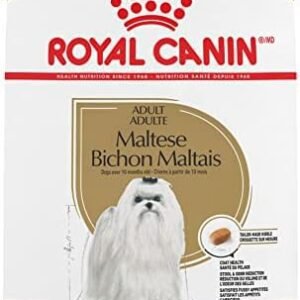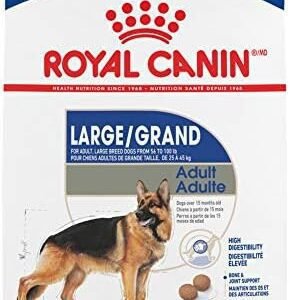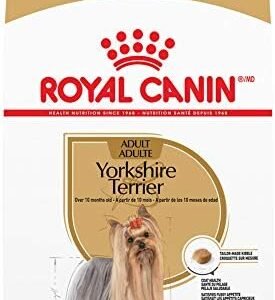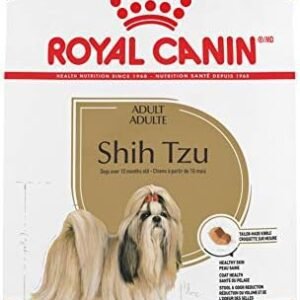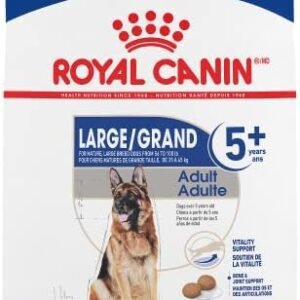Introduction
Did you know that bell peppers, those vibrant and crunchy vegetables adorning our salads and stir-fries, have a fascinating history and a delightful crunch? These colorful peppers are renowned for their versatility in human cuisine, but have you ever wondered whether your furry friend can enjoy this delectable treat as well? Dogs and their dietary preferences can be quite intriguing. As a responsible pet owner, you want to ensure that the foods you share with your dog are not only delicious but also safe and nutritious. In this article, we will embark on a journey to explore whether dogs can eat bell peppers and unveil the pros and cons of incorporating this vegetable into your canine companion’s diet.

Bell peppers come in a range of vibrant colors, from green and red to yellow and orange, making them not only visually appealing but also packed with nutrients. They are enjoyed by people in various forms, from fresh and raw to cooked and stuffed. However, the big question is whether dogs can join in on this colorful feast and savor the crispy goodness of bell peppers. To help you make informed decisions about what to feed your dog, we will delve into the nutritional aspects of bell peppers, their potential benefits, and the precautions to take when offering them to your four-legged friend.
For pet owners, it’s important to recognize that while some human foods can be shared with dogs, others can pose risks. Dogs have specific dietary requirements, and not all foods suitable for humans are safe for them. When it comes to bell peppers, we will explore whether they can be a wholesome addition to your dog’s diet or if they should be avoided altogether. Join us in this journey to uncover the truth about dogs and bell peppers, ensuring that your canine companion enjoys a safe and nutritious diet.
Table of Contents
Can Dogs Eat Bell Pepper?
Bell peppers, those colorful and crisp vegetables, are a common sight in our kitchens and on our plates. These versatile veggies add vibrant flavor and nutrition to various dishes, but can dogs enjoy the delightful taste and benefits of bell peppers as well? In this section, we will delve into the world of bell peppers to answer the question: Can dogs eat bell pepper?
Safety and Palatability
First and foremost, it’s essential to know that bell peppers are not toxic or dangerous to dogs. In fact, some dogs may genuinely enjoy the specific taste and crunchiness of this food item. However, like any dietary addition, moderation is key.
To provide a comprehensive overview, let’s begin by examining the nutritional content of bell peppers. In the following table, we’ll detail the key nutrients present in bell peppers, showcasing their potential benefits for dogs.
| Nutrient | Amount in 100g of Bell Pepper |
|---|---|
| Calories | 31 |
| Carbohydrates | 6.03g |
| Dietary Fiber | 2.1g |
| Sugars | 4.2g |
| Protein | 0.99g |
| Fat | 0.3g |
| Vitamin A | 1577 IU |
| Vitamin C | 127.7mg |
| Vitamin E | 0.37mg |
| Vitamin K | 4.9µg |
| Folate | 10µg |
| Potassium | 211mg |
| Manganese | 0.125mg |
Nutritional Benefits
Bell peppers come with a wealth of nutrients, which can offer some health benefits to dogs:
Vitamin A: Essential for vision, skin health, and a robust immune system, vitamin A is present in bell peppers in the form of beta-carotene, which can be converted into vitamin A in the body.
Vitamin C: Bell peppers are a rich source of vitamin C, a potent antioxidant that supports a dog’s immune system, aids in wound healing, and promotes overall health.
Vitamin E: This vitamin acts as an antioxidant, protecting cells from damage and contributing to skin and coat health.
Vitamin K: Necessary for blood clotting and bone health, vitamin K is present in bell peppers, although in small amounts.
Folate: A B-vitamin, folate plays a role in cell division and is necessary for the production of DNA and RNA.
Potassium: An essential electrolyte, potassium helps maintain healthy blood pressure and muscle function.
- Manganese: Although required in small quantities, manganese is important for healthy bone development and metabolism.
While these nutrients make bell peppers sound like a fantastic addition to your dog’s diet, there are some considerations and potential drawbacks to keep in mind.
Moderation and Preparation
Although bell peppers can provide nutritional benefits, it’s vital to feed them in moderation. Too much of anything, even a healthy vegetable, can upset your dog’s digestive system or lead to weight gain.
Start by offering your dog a small piece of bell pepper and observe their reaction. Some dogs may love the taste and crunch, while others may not be interested. If your dog enjoys bell peppers, you can continue to include them in their diet.
When feeding bell peppers to your dog, follow these preparation guidelines:
- Wash the bell pepper thoroughly to remove any pesticides or residues.
- Remove the seeds and the core, as these parts may be difficult for dogs to digest.
- Cut the bell pepper into small, bite-sized pieces to prevent choking.
Complement, Don’t Replace
While bell peppers can be a healthy and tasty addition to your dog’s diet, they should not replace the primary dog food. A well-balanced commercial dog food or a veterinarian-recommended homemade diet is designed to meet your dog’s specific nutritional needs. Bell peppers can complement your dog’s diet by adding variety and nutritional benefits, but they should not be the sole source of nutrition.
In the next sections, we will explore the potential risks and benefits of feeding bell peppers to dogs, addressing food allergies, gastrointestinal distress, and other issues that pet owners may encounter when sharing this colorful vegetable with their four-legged companions.
How Much Bell Pepper Can a Dog Eat?
When it comes to sharing bell peppers with your furry friend, moderation is key. While these colorful vegetables can be a tasty and nutritious addition to your dog’s diet, they should not make up a significant portion of their daily calorie intake. In this section, we will explore how much bell pepper is suitable for dogs, providing guidance on serving sizes and preparation.
The Importance of Moderation
Bell peppers should be viewed as a healthy treat for your dog rather than a primary source of nutrition. Just like any treat, they should be given in moderation to prevent digestive upset and maintain a balanced diet.
As a general guideline, treats should account for no more than 10% of your dog’s daily calorie intake. This ensures that the bulk of their diet consists of nutritionally balanced dog food, which is specifically formulated to meet their dietary needs.
Start Small and Observe
When introducing bell peppers to your dog’s diet, it’s wise to start with a small piece. Offer your canine companion a small, bite-sized portion and observe how they react. Some dogs may eagerly devour bell peppers, while others may be less enthusiastic. Their individual preferences will determine how much bell pepper you can include in their diet.
Not all dogs will appreciate the taste and texture of bell peppers, so don’t be discouraged if your dog doesn’t take to them right away. It’s essential to respect your dog’s preferences and not force them to eat bell peppers if they don’t enjoy them.
Preparation Matters
How you prepare bell peppers for your dog is also essential. Here are some key steps to ensure their safety and enjoyment:
Thorough Washing: Before offering bell peppers to your dog, make sure to wash them thoroughly. This helps remove any pesticide residues or contaminants that may be present on the vegetable.
Remove Seeds and Core: Bell pepper seeds and the central core can be challenging for dogs to digest and may pose a choking hazard. Ensure you remove both before feeding any bell pepper to your dog.
Cut into Bite-Sized Pieces: To make bell peppers safe for your dog to eat, slice them into small, bite-sized pieces. This minimizes the risk of choking and makes it easier for your dog to enjoy this treat.
Size and Breed Considerations
The size and breed of your dog play a role in determining how much bell pepper they can tolerate. As a general rule, larger dogs may be able to eat more bell pepper without any issues compared to smaller dogs.
For smaller dog breeds, a few small pieces of bell pepper may be sufficient as an occasional treat. Larger dogs may tolerate a bit more, but it’s essential to keep track of their reaction and adjust the serving size accordingly.
Serving Sizes Based on Weight
To provide a rough idea of appropriate serving sizes based on your dog’s weight, you can use the following guidelines:
- Small Breeds (e.g., Chihuahua, Dachshund): 1-2 small pieces (1-2 tablespoons) as an occasional treat.
- Medium Breeds (e.g., Beagle, Bulldog): 2-3 small pieces (2-3 tablespoons) as an occasional treat.
- Large Breeds (e.g., Labrador Retriever, Golden Retriever): 3-4 small pieces (3-4 tablespoons) as an occasional treat.
- Giant Breeds (e.g., Saint Bernard, Great Dane): 4-5 small pieces (4-5 tablespoons) as an occasional treat.
Remember that these are general guidelines, and your dog’s individual tolerance and preferences may vary. Always monitor your dog’s reaction and adjust serving sizes accordingly.
In the next section, we’ll explore the potential risks and considerations associated with feeding bell peppers to dogs, including food allergies and gastrointestinal distress, to help you make informed choices for your pet.
Risks of Feeding Bell Pepper to Dogs
While bell peppers are generally considered safe for dogs, there are certain risks and considerations you should be aware of when incorporating them into your canine companion’s diet. In this section, we’ll address these potential concerns and provide you with information to ensure a safe and enjoyable experience for your furry friend.
Food Allergies in Dogs
One potential risk when feeding bell peppers to dogs is the possibility of food allergies. Just like humans, dogs can develop allergies to certain foods, and bell peppers may trigger an allergic reaction in some individuals. It’s crucial to be vigilant and watch for any signs of allergies when introducing new foods to your dog’s diet.
Short-Term Signs of Food Intolerance
Food intolerance or sensitivity may also be a concern when dogs consume bell peppers. While not necessarily an allergic reaction, food intolerance can result in short-term discomfort and gastrointestinal distress. Symptoms of food intolerance in dogs may include:
Upset Stomach: This can manifest as vomiting or diarrhea. It’s essential to monitor your dog for any digestive upset following the consumption of bell peppers.
Excessive Gas: Some dogs may experience increased gas or flatulence after consuming bell peppers, which can be discomforting for both the dog and its owner.
Loose Stools: Changes in the consistency of your dog’s stools may be an indication of food intolerance. Bell peppers could lead to softer stools in some cases.
- Abdominal Discomfort: Restlessness, discomfort, or signs of abdominal pain may occur when dogs are unable to digest or tolerate bell peppers.
If you observe any of these signs or symptoms after your dog consumes bell peppers, it’s advisable to discontinue offering them this vegetable and consult your veterinarian. They can provide guidance on how to manage your dog’s diet and address any gastrointestinal distress.
Hazards Related to Specific Components of Bell Pepper
While bell peppers themselves are not toxic to dogs, certain components should be taken into consideration:
Capsaicin: Bell peppers contain a compound called capsaicin, which is responsible for their spiciness. While bell peppers have a minimal amount of capsaicin compared to hot peppers like jalapeños or chili peppers, it’s still present. Dogs have varying levels of tolerance to capsaicin, and some may experience gastrointestinal discomfort or an upset stomach if they consume too much of it.
Pesticides and Contaminants: It’s essential to thoroughly wash bell peppers before offering them to your dog to remove any pesticide residues or contaminants. These substances can be harmful to dogs, so ensuring a clean and safe vegetable is paramount.
Signs of Allergic Reactions
It’s vital to watch for signs of allergic reactions when feeding bell peppers to your dog. Allergic reactions can be serious and may include symptoms such as:
- Skin Irritation: Look for signs of itching, hives, or rashes on your dog’s skin.
- Facial Swelling: Swelling of the face, particularly around the eyes or muzzle.
- Respiratory Distress: If your dog has difficulty breathing or coughing, this may indicate an allergic reaction.
- Vomiting or Diarrhea: Persistent vomiting or diarrhea may be a sign of an adverse reaction.
- Behavioral Changes: Restlessness, anxiety, or other unusual behavior can also indicate discomfort.
If your dog exhibits any of these symptoms after consuming bell peppers, seek immediate veterinary attention. Allergic reactions can vary in severity, and some can be life-threatening, so it’s crucial to take them seriously.
Specific Issues
In addition to allergic reactions and food intolerance, there are specific issues that can arise from consuming bell peppers. Here are a few to be aware of:
Choking Hazard: The seeds and core of bell peppers can pose a choking hazard for dogs. Ensure that you remove these parts before offering bell peppers to your pet.
Digestive Distress: As mentioned earlier, some dogs may experience digestive distress or upset stomach after eating bell peppers. Symptoms can include vomiting, diarrhea, and excessive gas.
In the next section, we’ll explore ways to make bell peppers more enjoyable for your dog and provide some creative ideas for incorporating them into your pet’s diet.
How to Feed Bell Pepper to Your Dog and Make It Enjoyable
Now that we’ve explored the risks and benefits of feeding bell peppers to dogs, it’s essential to discuss how you can safely incorporate this nutritious vegetable into your dog’s diet. By following certain guidelines and getting creative with your culinary skills, you can make bell peppers an enjoyable and tasty addition to your furry friend’s meals.
Ways to Feed Bell Pepper to Your Dog
There are various ways to introduce bell peppers into your dog’s diet. Here are some popular methods:
Fresh and Raw: The most straightforward way to offer bell peppers to your dog is to serve them fresh and raw. Dogs can eat all colors of bell peppers, including green, red, and yellow. Simply wash the pepper, remove the seeds, and core, and then cut it into bite-sized pieces. This allows your dog to enjoy the natural crunch and flavor of the vegetable.
Cooked: If your dog prefers softer textures or you’re looking to incorporate bell peppers into cooked meals, consider lightly steaming or boiling them. Steamed or boiled bell peppers can be a great addition to homemade dog food or as a side dish to their regular meals. Again, ensure that you’ve removed seeds and the core before serving.
Bell Pepper Strips: For a fun and interactive treat, cut bell peppers into long, thin strips. These can be an enjoyable way to engage your dog in a game of catch or fetch, providing both physical exercise and mental stimulation. Bell pepper strips are a low-calorie treat option and can be an alternative to store-bought dog toys.
Stuffed Bell Peppers: Get creative by stuffing bell peppers with dog-friendly ingredients like lean ground meat, brown rice, and a bit of cheese. Bake the stuffed peppers until they’re tender and the stuffing is cooked through. Your dog will love the combination of flavors.
Frozen Bell Pepper Treats: During warmer months, consider making frozen bell pepper treats. Cut bell peppers into small pieces and freeze them. These icy treats can provide a refreshing wayfor your dog to stay cool and hydrated on a hot day.
Homemade Treats and Snacks with Bell Pepper
To make bell peppers more enjoyable for your dog, you can incorporate them into homemade treats and snacks. Here are some creative ideas:
1. Bell Pepper Chips: Slice bell peppers thinly, removing the seeds and core, and dehydrate them to create crispy bell pepper chips. Dogs tend to enjoy the crunch of dehydrated vegetables. You can use a food dehydrator or an oven set to a low temperature. Remember to monitor the chips as they dehydrate to ensure they don’t become too brittle.
2. Bell Pepper and Meat Jerky: Combine bell pepper slices with lean, high-quality meat like chicken or turkey. Dehydrate the mixture to create tasty and nutritious jerky. Your dog will savor the flavors of both the meat and the bell pepper.
3. Bell Pepper and Cheese Bites: Cut bell peppers into small pieces and mix them with dog-safe cheese, such as cheddar or mozzarella. Form the mixture into bite-sized balls or shapes, then refrigerate them until they’re firm. These bites can be a hit with your dog, combining the savory taste of cheese and the crispiness of bell peppers.
4. Bell Pepper Smoothie: Create a dog-friendly smoothie by blending bell pepper with other canine-safe ingredients like yogurt, pumpkin puree, or a small amount of honey. Pour the smoothie into ice cube trays and freeze them into refreshing treats.
5. Bell Pepper and Peanut Butter Delight: Slice bell peppers into rounds, remove seeds, and fill them with a small amount of peanut butter. You can use regular or dog-safe peanut butter (free of xylitol and other harmful ingredients). This is a delightful and nutritious treat that combines the natural sweetness of bell peppers with the creamy richness of peanut butter.
When preparing homemade treats or incorporating bell peppers into your dog’s diet, always keep portion control in mind. While bell peppers are a healthy addition, they should be considered as a part of your dog’s overall diet and caloric intake. Monitor your dog’s weight and overall health to ensure that they are thriving on the new treats and snacks you introduce.
In the following section, we will address some of the most frequently asked questions about dogs eating bell peppers, providing you with additional insights and guidance to make informed decisions about your dog’s diet.
10 FAQs About Dogs Eating Bell Peppers
Can Dogs Eat All Colors of Bell Peppers?Yes, dogs can safely eat all colors of bell peppers, including green, red, and yellow. These vegetables are a healthy addition to your dog’s diet, but be sure to remove the seeds and core, as these parts can be difficult for dogs to digest.
Are Bell Peppers Nutritious for Dogs?Absolutely! Bell peppers are rich in essential nutrients such as vitamin C, vitamin A, and dietary fiber. They also provide antioxidants that can benefit your dog’s overall health.
Can Bell Peppers Help with My Dog’s Digestion?
Yes, the fiber in bell peppers can aid in digestion by promoting regular bowel movements. However, it’s crucial not to overfeed your dog with bell peppers, as excessive fiber intake can lead to digestive upset.
What Are the Risks of Feeding Bell Peppers to Dogs?While bell peppers are generally safe for dogs, overconsumption can lead to stomach upset and diarrhea. It’s essential to introduce this vegetable in moderation and observe your dog’s reaction.
Can Bell Peppers Cause Allergies in Dogs?Bell peppers are not a common allergen for dogs. However, as with any new food, it’s advisable to monitor your dog for signs of allergies, such as itching, hives, or gastrointestinal distress. If you notice any adverse reactions, consult your veterinarian.
What Are the Benefits of Including Bell Peppers in My Dog’s Diet?
Bell peppers offer various benefits, including added vitamins and minerals, a natural crunch for dental health, and a low-calorie treat option. They can also make your dog’s meals more interesting and appealing.
How Should I Prepare Bell Peppers for My Dog?To prepare bell peppers for your dog, wash them thoroughly and remove the seeds and core. Cut them into bite-sized pieces for easy consumption. You can serve them raw, steamed, or lightly boiled.
How Much Bell Pepper Can I Give to My Dog?The amount of bell pepper to feed your dog depends on their size. Small dogs may enjoy a few small pieces, while larger breeds can have more significant portions. Just remember to maintain moderation to avoid digestive issues.
Can I Include Bell Peppers in Homemade Dog Treats?
Yes, you can incorporate bell peppers into homemade dog treats. Bell pepper chips, bell pepper and meat jerky, and bell pepper and cheese bites are a few creative ideas to make tasty treats for your furry friend.
What Do I Do If My Dog Consumes Too Much Bell Pepper?If your dog consumes too much bell pepper and experiences symptoms like diarrhea or vomiting, give them a break from this vegetable. Ensure they have access to fresh water to stay hydrated. If symptoms persist or worsen, consult your veterinarian.
In conclusion, while bell peppers can be a healthy and tasty addition to your dog’s diet, it’s essential to maintain moderation. As with any dietary change, it’s a good practice to consult your veterinarian before introducing new foods to ensure they align with your dog’s specific needs and dietary restrictions. Bell peppers can be a delightful treat for your four-legged companion, providing a range of nutrients and flavors to enhance their dining experience.
We hope this article has provided you with valuable insights into feeding bell peppers to dogs and answered your most pressing questions. If you have more queries or experiences to share, we invite you to engage with us in the comments section below or through our social media channels. Your feedback and stories are invaluable in building a supportive and informed community of dog owners.
Conclusion
In conclusion, we’ve explored the intriguing world of dogs and bell peppers. This colorful vegetable can indeed be a part of your canine companion’s diet, but with some important caveats.
As you can see, dogs can eat bell peppers in small amounts as an occasional treat. They bring an array of nutrients and are generally safe for most dogs. However, you should be aware of the potential risks and the importance of limiting their intake accordingly. Excessive bell pepper consumption can lead to digestive issues and discomfort for your dog, so moderation is key.
While bell peppers are a delightful addition to your dog’s treat menu, they are not essential for your dog’s health, and feeding them excessively or improperly may cause more harm than good. Always monitor your dog’s response when introducing new foods into their diet, and consult your veterinarian if you have concerns about dietary allergies or sensitivities.
If you want to provide your dog with a different, safe, and healthy snack, consider alternatives like carrots, blueberries, or cucumbers. These foods are lower in sugar and acidity than bell peppers and offer similar or better nutritional benefits. Just remember to remove any seeds or cores before feeding them to your furry friend.
We hope this article has been informative and helpful on your journey to provide the best for your dog. If you have any questions or comments about dogs and bell peppers or want to share your experiences and insights, please feel free to join the discussion in the comments section below. Your feedback and stories contribute to our shared knowledge and help create a community of informed and caring dog owners.




















